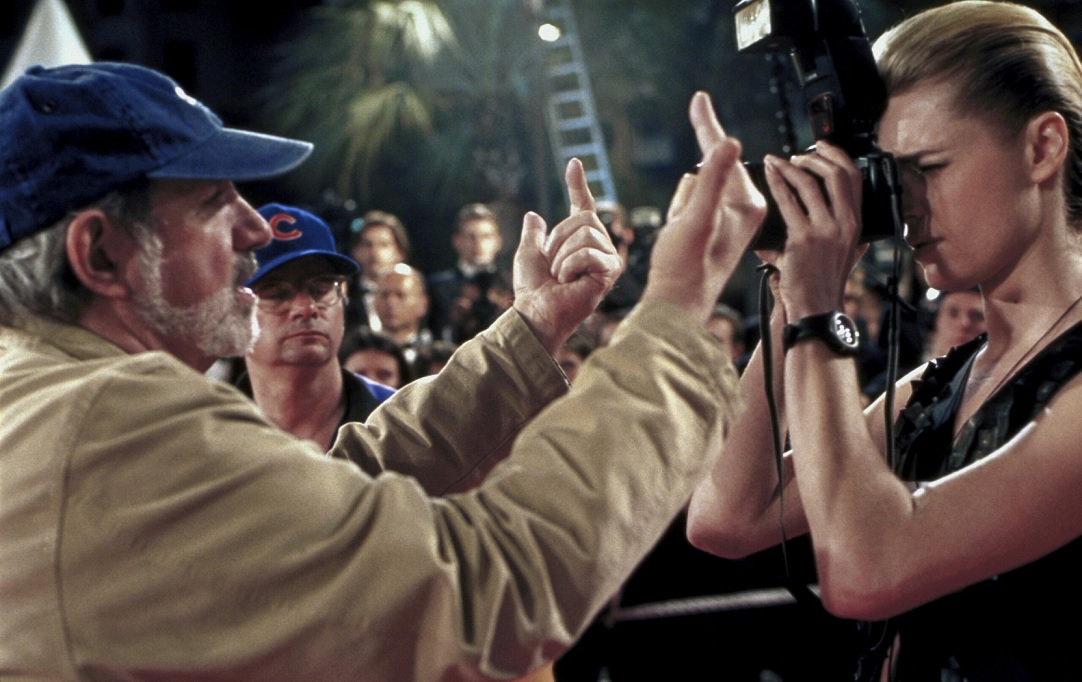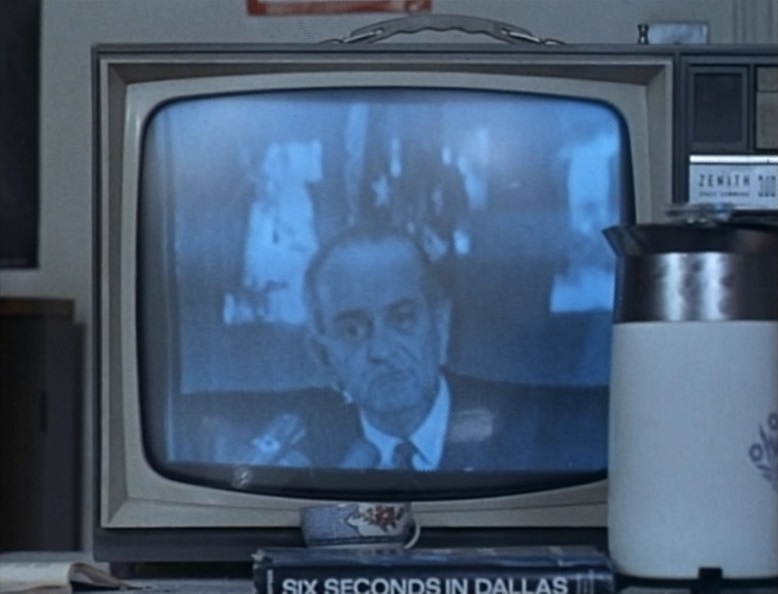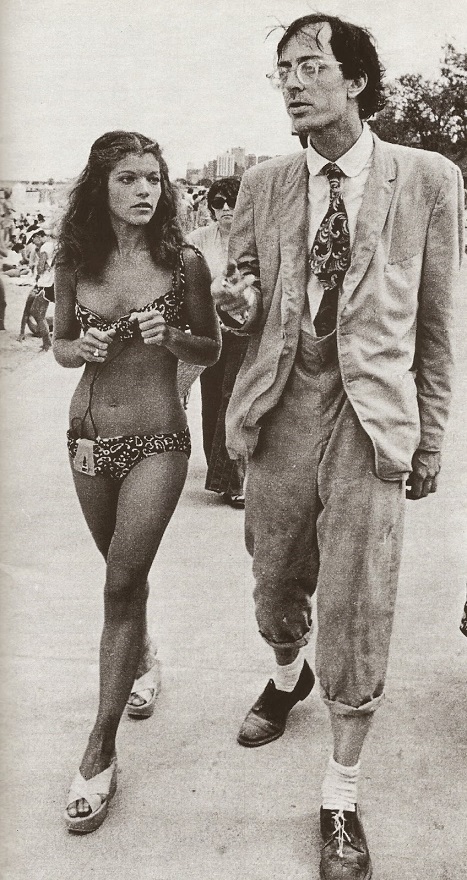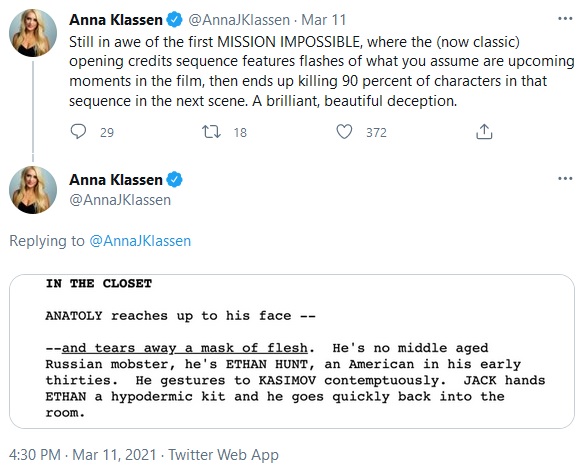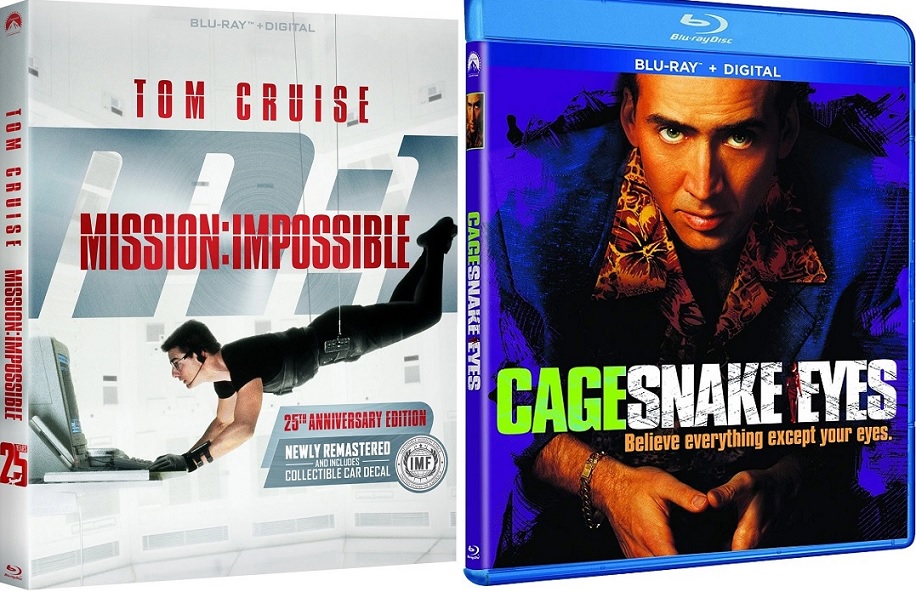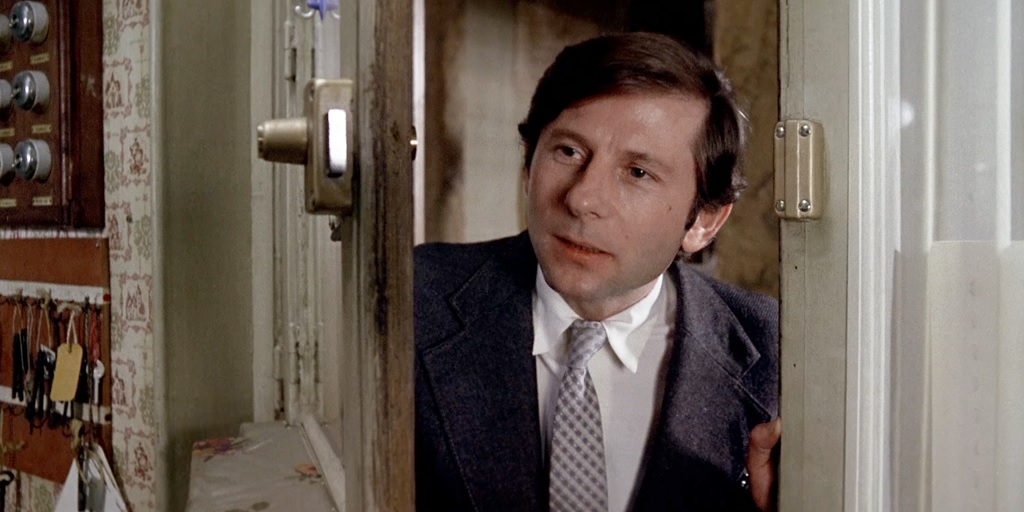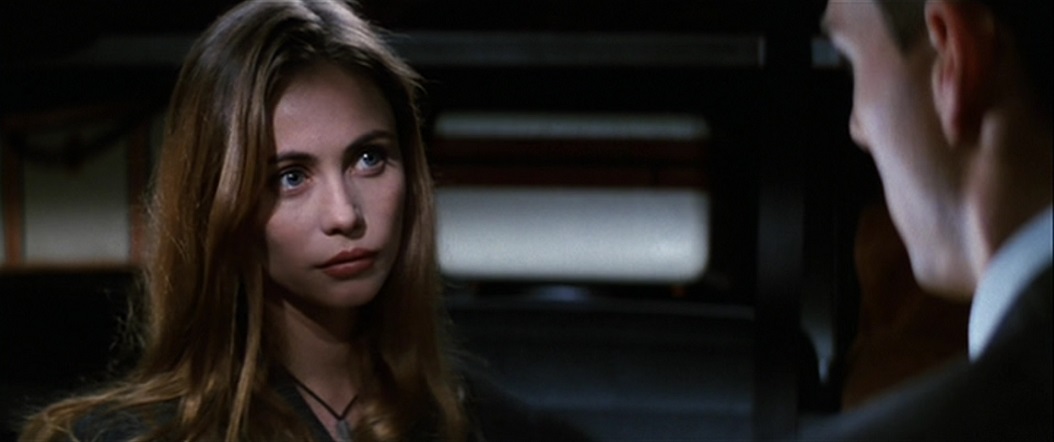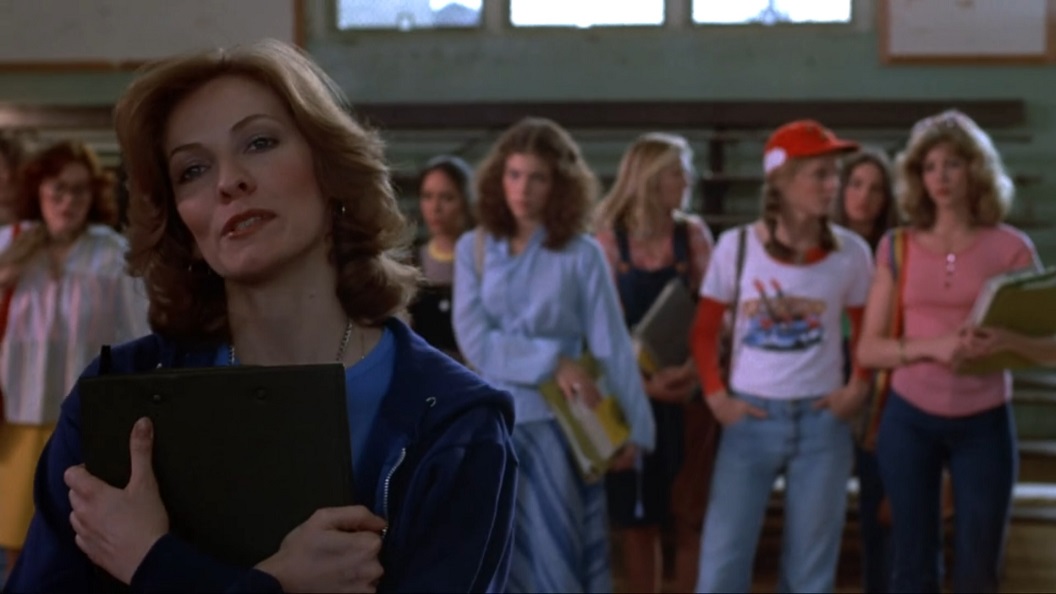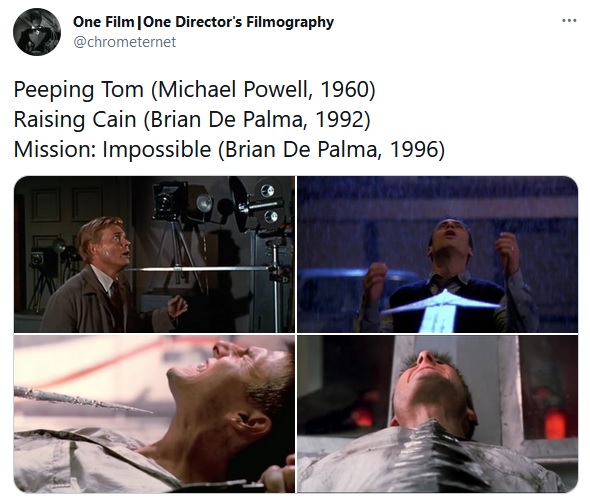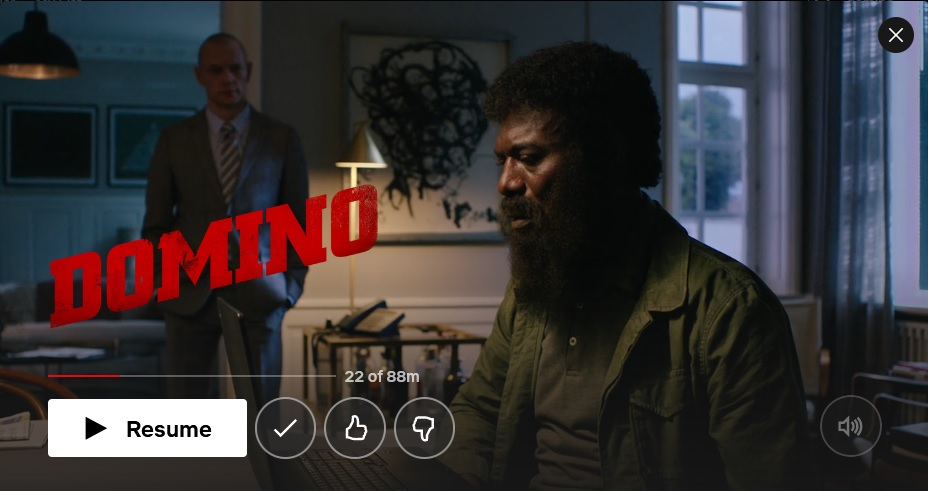. Although Frini states that "there are no statements from the two directors that reveal interest in each other's work," De Palma, in fact, had included Polanski's
. "I liked
," De Palma stated, "because, I mean, Polanski throws himself out the window, commits suicide, and then crawls up and does it again. Fabulous."
Having cleared the field, therefore, of an established and cumbersome inheritance, it is better to focus on the combination of Polański / De Palma. Similarities can be found between various films by the two authors. Starting with Repulsion, Polański's second feature film. Carol is a young manicurist who lives with her sister, Helen. Fragile from a psychological point of view, the girl is morbidly attached to her sister and suffers from Helen's relationship with her lover, whose presence she can hardly bear. Then when Helen and the man leave for a vacation leaving her alone, the young woman falls into a real state of madness, ending up locking herself in the apartment and killing both a suitor and the landlord.
Carol inaugurates a series of female characters from Polański's cinema who, with various nuances, are characterized by a whole series of problems related to relationships in general and with men in particular. Next to Carol is Sarah, the heroine of Please Don't Bite Me on the Neck! (The Fearless Vampire Killers, or Pardon Me, But Your Teeth Are in My Neck), 1967, and Rosemary, star of Rosemary's Baby, 1968. Sarah is a virgin and for this reason her father keeps her segregated, fearing that she could end up in the clutches of the vampire who terrorizes a district of Transylvania. Which in fact happens. Moving to a New York apartment with her husband, Rosemary is instead made pregnant by the devil. While in Repulsion the viewer can have no doubts about Carol's mental state (in case she wonders about the possible causes) in Rosemary's Baby Polański maintains a certain ambiguity: there really is a satanic sect or the protagonist, perhaps terrified of having a child, is he just imagining everything?
Not dissimilar from the female characters of the first part of Polański's career: one could add Simon Choule who commits suicide (and of which we learn something only through the other characters) in The Tenant, are those of the films of the seventies by De Palma. Le due sorelle (Sisters, 1972), stars Danielle, who suffers from personality disorders (she was separated at birth from a twin who died in the surgery) and who, prey to a raptus, kills a man after the adventure of one night. Danielle's relationship with her dead sister isn't much different than Carol's with Helen. The derivation from the cinemaof Polański in Carrie, which De Palma made in 1976, is evident. Not only and not so much for the diabolical theme that relates it to Rosemary's Baby (the latter also to The Phantom of the Paradise), as for the characterization of the character (you can even notice a physical similarity between Carol, Rosemary and Carrie, a certain physical fragility as well as psychological) and for how it is defined through the relationship with the others. In Repulsion as in Sisters and Carrie, the protagonists react to an attack from the outside world. In the first two in the form of a male intrusion into their private life; Carrie instead gives free rein to her telekinetic powers first against the oppressive and bigoted mother (who however is the projection of Carrie, is what she could become, as Evelyn Mulwray in Chinatown is of her daughter / sister) who wants to prevent her from attending the dance at the end of the school year, then during the party when she is made the subject of a terrible joke. Like Repulsion, Carrie is based on a narrative structure that contrasts the interior (the house, but also the physical and psychological intimacy of the two women) and the exterior (the beautician where Carol works and Carrie's college). The relationship with the others unites Repulsion and Carrie also in the way in which the male characters of the two films relate to Carrie / Carol.
The same thing regarding the interior and the exterior applies to The Tenant, who also comes out in the same year as Carrie. It must be said, among other things, that for both Polański and De Palma the interior-house does not at all mean that the protagonists are safe in the home: not the tenant Trelkovsky, obsessed with the suicide of the previous tenant, nor is Rosemary (whose husband is part of the satanic plot) nor Carrie, because of her mother.
As for The Tenant, other points of contact with contemporary Carrie should be emphasized. In both, in the main sequence (Trelkovsky's suicide, Carrie's massacre) Polański and De Palma show in subjective what the two characters see (or think they see): Trelkovsky the inhabitants of the building who hunt him, threatening and diabolical (some with a forked tongue), Carrie students and teachers laughing at her. The point of view of the characters does not exclude an objective level, alternating with the subjective in order to create a hallucinatory dimension, which sows doubt in the viewer, as already mentioned with regard to Rosemary's Baby. And it is precisely this narrative choice, practiced with obstinacy by Polański and which casts a shadow of ambiguity on the protagonists (healthy or crazy?), that represents the main source of inspiration for De Palma. In addition, the sequence in which Trelkovsky throws himself out of the window and is surrounded by apartment buildings and drags himself on the ground is also reminiscent of the ending of The Phantom of the Paradise, with Winslow agonizing as the concertgoers cheer and mock him.
But there are other characteristics that the two filmmakers have in common and that should be explored. The circularity of the narrative (in What?, Chinatown, The Tenant, and in Obsession, Blow Out, Femme Fatale), on which in 1993 Polański expressed himself as follows: "It is a form of elegance that has always seduced in the cinema. I really like works where there is a beginning, a development, and an ending in which you return to the starting point "(Alberto Scandola, Roman Polański, Il Castoro Cinema, 2002).
The use of machine movements, for example the overview on the windows of the condominium made with Louma in The Tenant (he is the first to use this articulated crane) and the equally masterful use of the dolly in the sequence of the awards ceremony in Carrie. As well as the good intentions of the characters that have a nefarious effect in The Fearless Vampire Killers, Chinatown, Tess, and in Dressed to Kill, Blow Out, Body Double. Also, in The Fearless Vampire Killers and The Phantom of the Paradise we find a common "classic" inspiration (respectively Dreyer's Vampyr and Julian's Phantom of the Opera), similar expressive choices (acceleration), the mixture of horror situations and humor, characters that are almost mirror-like (Von Krolok / Swan, Sarah / Phoenix, Alfred and Abronsius / Winslow, Herbert / Beef, Koukol / Philbin) and linked by an equally specular relationship: becoming vampires in the first and the contract with the devil and its consequences in the second.
The Tenant and Dressed to Kill share evident themes (the double, schizophrenia, the disguise of a woman) and some narrative situations that De Palma seems to take from Polański. In The Tenant, during the scene in the church, a little girl sitting a little further on stares at Trelkovski, while in Dressed to Kill a little Girl with her mother repeatedly stares at Kate in the elevator. Furthermore, when Trelkovski lets Stella entertain him, the girl wakes him up in the morning and he snaps up frightened, almost defending himself; Liz does the same in the Dressed to Kill finale. Trelkovski says he had a nightmare, but the viewer doesn't see it. De Palma, on the other hand, shows Liz's nightmare.
